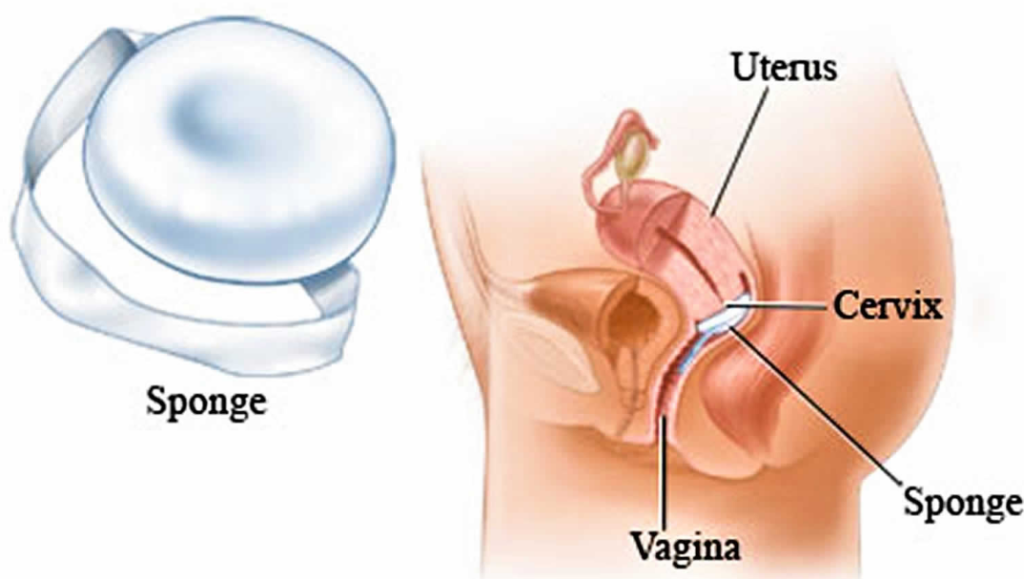Sexually active people willing not to sex pregnant while having sex should learn as much as they can about the possible options. Birth e is not tiresome. Besides, contraception is a significantly healthier solution comparing to abortion. Of course, the most reliable way of not getting pregnant is not to have sex at all. But that’s ridiculous!
The FPA (which stands for The Family Planning Association), claims that within a year, about 90% of sexually active women will get pregnant without contraception.
Every sex act can lead to pregnancy. How does it happen? A woman can get pregnant even if she’s a virgin and it’s her first sex ever.

There’s a range of contraception options for sex available only with a doctor’s prescription. Nevertheless, you can always find a suitable contraception form that does not demand a visit to the doctor. Read further to find out more about the most powerful contraception types.
How to Use Barrier Methods?
These methods are destined to protect the egg from the sperm reaching it.
How to Apply Male Condoms
They provide not only pregnancy protection but also protection against sexually transmitted infections. To be more precise, female and male condoms are the only barrier methods protecting from STIs.
According to the Centers for Disease Control and Prevention, when condoms are used properly, they are over 80% effective for the protection from pregnancy.
Stick to the following steps when using a male condom:
- Make sure the size is suitable for you because condom sizes are different;
- If you own a circumcised penis, place the condom on its head when it’s erect;
- If your penis is uncircumcised, don’t forget to pull the foreskin back;
- Press the condom tip to get rid of the air;
- Unroll the condom to the base of the penis;
- After ejaculation, press the condom base with your fingers before you pull it out of the vagina;
- Carefully take the condom off and never reuse it;

Latex is the most common material used for condoms. However, if you are allergic to latex, you can use the ones made of polyurethane or polyisoprene. Most condoms are already lubed up, but if you’re planning to add additional lubricant, make sure it’s compatible with the condom. For instance, latex is compatible only with water-based lubricants.
There’s a wide range of condoms available without a prescription. You can buy them in the local stores, supermarkets, pharmacies, and online shops. You can also order them from over-the-counter.

How to Apply Female Condoms
You don’t need a prescription to purchase a pack of condoms for women. Remember that you shouldn’t use a female condom together with a male condom. It’s the basic safety rule. According to the Centers for Disease Control and Prevention, these condoms are around 79% powerful for pregnancy prevention.
Female condoms are not always easy to find in the local, small shops and drugstores, but you can easily order them online.

Diaphragm
A diaphragm is a convenient, non-hormonal barrier contraception method. You place it inside the vagina (according to the instruction) after the application of spermicide to it before every usage. It’s one of the most powerful barrier contraception options, offering up to 90% protection from pregnancy.
A diaphragm is inserted several hours before having sex (specify this information in the instruction first because different models can obtain different characteristics).
It’s one of the best forms of pregnancy prevention, but the diaphragm does not protect from STIs.

Cervical Cap
A fem cap or a cervical cap is made of high-grade silicone. It’s a cup that a person should place deep in the vagina. The cervix stays protected under the cup, preventing the sperm from getting close to the egg while having sex.
A cervical cap does not protect from STIs, but it offers a high level of protection from pregnancy after sex, up to 85%. Cervical caps are popular products available in pharmacies and online stores both in the country and from over the border.

Sponge
One more type of non-hormonal, birth control options, available without a prescription. It has something in common with a diaphragm, but you don’t need to apply the spermicide yourself. It already contains spermicide inside.
It’s a sponge made of polyurethane foam and soaked in spermicide. A person should place it in the vagina, deep inside to cover the uterus opening.
It’s also one of the most powerful birth-control tools, offering up to 88% protection from pregnancy after sex. You can use a sponge in a combination with a condom to protect yourself from STIs. These products can be purchased in pharmacies and online stores.

Spermicide
Spermicides do not demand your doctor’s prescription. They are special chemicals inactivating sperm. Spermicide can be used in a combination with various barrier birth-control methods. The sponge already contains a sufficient amount of spermicide inside.
You should apply spermicide about 10 minutes before intercourse. Make sure you read the instruction thoroughly, but the main rule is to apply it as deep as possible so that it could reach the cervix.
Spermicide is not one of the most powerful methods. When used alone, it offers about 70% effectiveness.
Spermicide is sold in the form of gel ad can be bought in regular and online pharmacies. There’s no need for a prescription, but you’d better consult your doctor on how to use it right and what spermicide product works best for you.

How to Use Hormonal Methods
The majority of hormonal birth-control products are available only if you have a prescription. They stop ovulation, which means that the egg is not released from the ovaries. Hormonal meds will protect you from pregnancy, but they will never protect you from STIs.

How to Use Contraceptive Pills
If you are not planning to get pregnant while you are in a stable relationship, contraceptive pills can become the best choice. According to the National Health Service, they offer up to 99% protection from getting pregnant.
There are two birth-control pill types:
- The combined pills. These are daily pills containing progestinand estrogen. Some of the pills in the pack do not contain hormones, and you should take the pills in a specific order. You should follow the schedule in the instruction.
- The mini-pills. They contain only progestin. A mini-pill should be taken daily, at the same time. There’s no need in following a monthly schedule.

How to Use Contraceptive Patches
If you strictly follow the instruction coming with a pregnancy contraceptive patch, you’ll get around 99% powerful protection from pregnancy.
If you are a first-time user, you might get troubles in the beginning, but the effectiveness will still be high enough – around 90%.
A patch can be stuck on the:
- Back;
- Buttocks;
- Stomach;
- Upper arm.
A patch should be worn for 3 weeks. Then you should make a one-week pause to launch the menstrual cycle. This way, you will control pregnancy. A patch can cause slight irritation on the surface of the skin, but it’s entirely safe.

Injection
Injection should be given once a year. When you get an injection on time, you get more than 90% protection from unwanted pregnancy.
If you’re through a planned pregnancy therapy, you might take the injection for about ten months in line with the schedule your doctor will build up for you. A contraceptive shot will help you stay away from being pregnant for about ten months until you decide to restore fertility.

Vaginal Ring
A correctly used vaginal ring offers about 95 % protection from pregnancy, but it does not protect you from STIs. It’s a specific vaginal ring releasing hormones into the body for 3 weeks which prevents from getting pregnant.
You need to remove a ring for a week for a period to start before you insert another one.

How to Apply Intrauterine Devices & Implants
Implants and intrauterine devices are long-term birth-control methods. They are about 99% effective at preventing pregnancy. Of course, they are not suitable for fighting against STIs.
IUDs
An IUD is a tiny tool inserted into the uterus by the doctor. There are two options to try:
- Hormonal. Your doctor fits it once, and it works for 5 years before the replacement. The ovulation does not stop, but the tool prevents the sperm from entering the uterus. An IUD also controls hormonal changes and makes a woman feel better in the time of the period.
- Copper-based. It’s a hormone-free IUD solution based on copper wire. It eliminates the sperm on the way to the uterus. This solution works for about 10 years.
The unwanted reactions are unpleasant, but they are entirely safe. You might experience irregular periods, spotting between periods, and menstrual cramps.

Implants
An implant against unwanted pregnancy is a rod sized like a matchstick. As soon as it’s implanted into the arm, it starts releasing progestin, preventing ovulation. It’s a 99% effective tool. You c to replace the implant after 3 years.
Other Methods
Natural Family Planning
Your doctor will examine your body and have a look at your analyses. Your health state and current medical conditions will help the physician track the menstrual cycle.
It’s one of the most natural contraception methods. Your doctor will inform you about the fertile phase, basing on the current analyses and health conditions. You won’t be able to do it on your own.
A fertile window can last up to nine days monthly. The release of the egg and the ovulation will be counted precisely.

Natural family planning includes several methods. Your fertile window or ovulation is easily inspected through:
- Body temperature:
- Quantity and quality of the cervical mucus;
- Cycle details were watched over for several months by the medical practitioner.
The fertility window is not the same for everyone. Everything depends on the signals of the body and health conditions. Family planning is about 75% effective for the majority of couples, according to CDC. If you follow the medical recommendations accurately, you’ll get maximum protection before you finally decide to give birth.
Morning After Pill
It’s an emergency birth-control solution for a broken condom or another contraceptive failure. If you stick to the regular birth-control methods, you don’t have to deal with it. A morning-after pill, or an emergency pill, is a very potent medication. It makes you experience menstruation the day after sex.

Emergency contraception is different.
- Emergency birth control contraceptive pill. Well, you understand that you have no way to go because your partner has done it before you could predict. You can take a hormonal pill for three days after sex. The earlier you do this, the better. You’ll have minimum trouble if you take the pill right after the intimacy.
- Copper IUD. You can insert this thing in within 5 days after sex. Levonorgestrel pills can be purchased in one of the local pharmacies or prescribed by the doctor. It’s the most effective contraception method offering about 99.9% protection from getting pregnant.
Sterilization
Permanent procedures for the reduction of fertility exist. Unfortunately, they are not official in many countries. Hopefully, the United States and the majority of the European countries do not have this trouble. Sterilization is 99.9% effective, especially, if you’re not willing to give birth after sex, regardless of the reasons.
Both men and women are interested in the permanent reduction of fertility nowadays. They have regular sex, and having sex is a serious step for them.
This tool helps you not to get pregnant, but it does not protect you from STIs. Remember that a vasectomy is no reversal in the majority of cases. Sterilization for women is also called tubal ligation. The fallopian tubes get clamped or sealed. It’s usually a permanent effect, and you won’t manage to restore your birth-giving possibilities. Rarely, the tubes can reconnect, which is a very rare case. It can lead to pregnancy.

